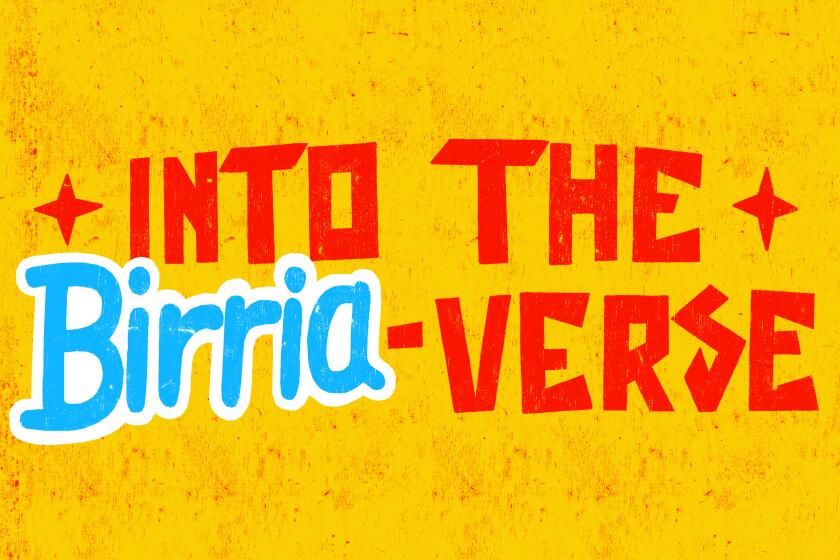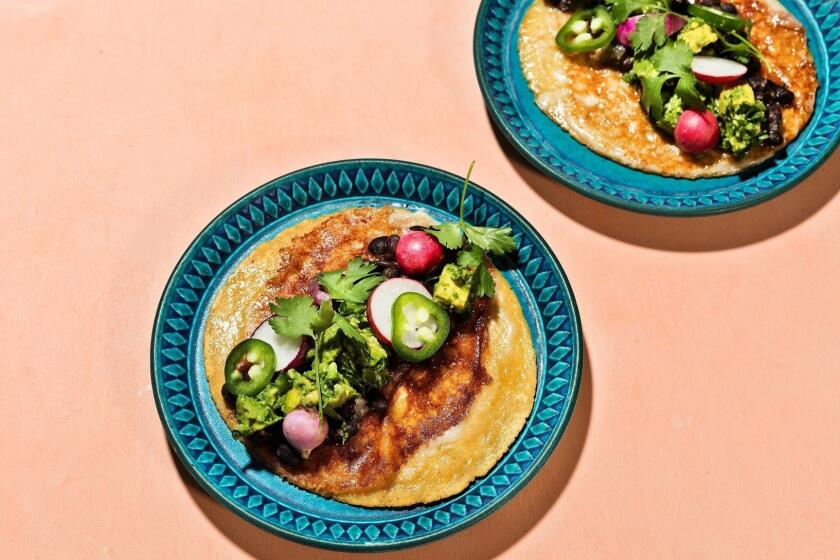For over 137 years, no newspaper has covered Mexican food better than the L.A. Times
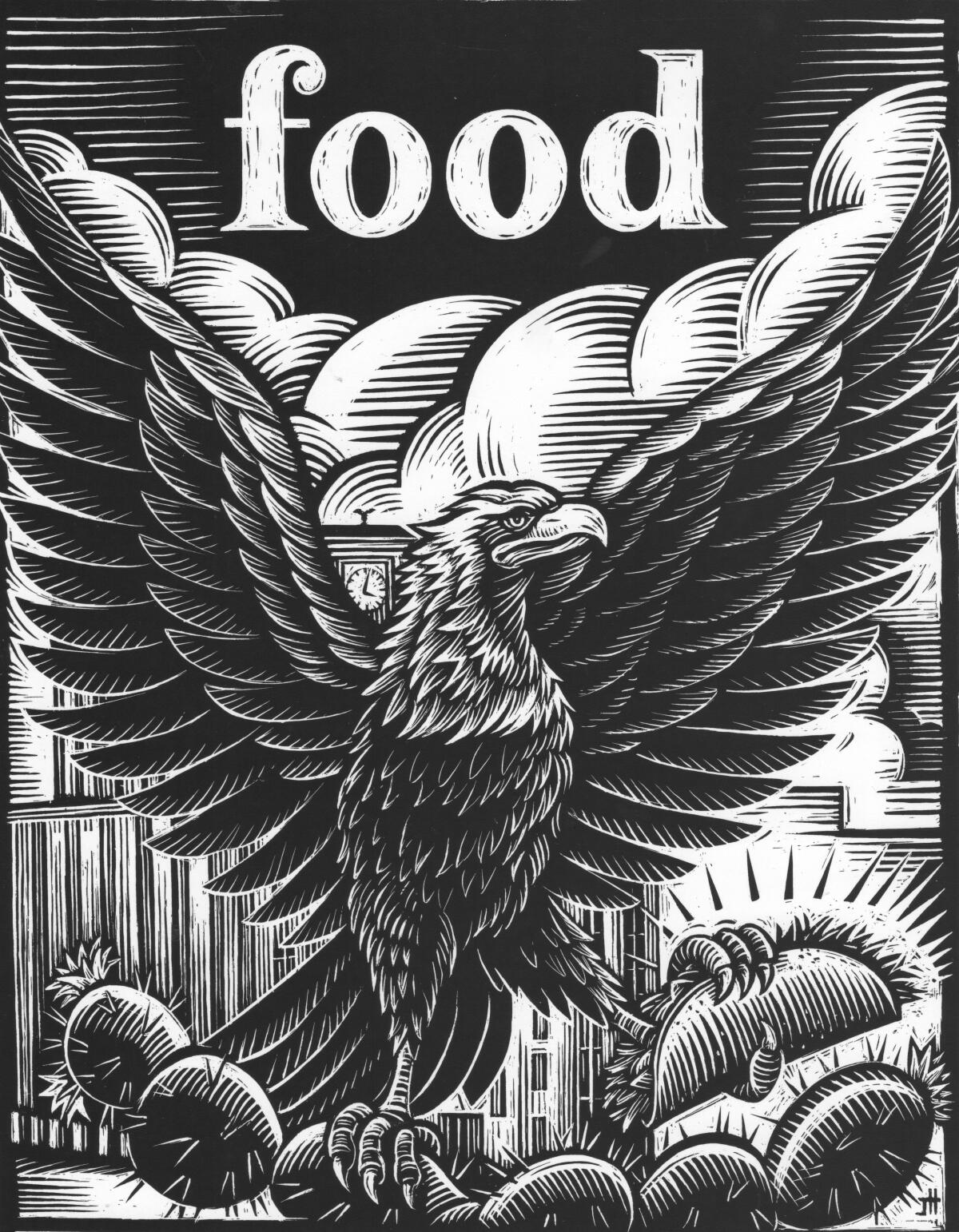
- Share via
Taco editor? No need here. It’s self-serving and haughty to assert that no American news service has championed Mexican food better than the Los Angeles Times, but it’s the truth.
Take it from the guy who wrote the book on Mexican food in the United States: me. But even I didn’t know the full scope of The Times’ coverage until I joined the paper and spelunked into the archives.
What I found was muy bueno: For more than 137 years, The Times has operated under the radical idea that Mexican food is a part of this country’s fabric instead of a foreign cuisine with the propensity to cause Montezuma’s revenge. We’ve done so by challenging readers’ expectations of what “Mexican food” is. By calling trends long before anyone else. By pushing non-Mexican readers out of their comfort zone to try out something more caliente in their home kitchens or on a night out.
Even when we’re printing recipes for tamale pie.
And while other sections of The Times either ignored L.A.’s Mexican American community or stereotyped them.
In an era when representation and diversity of voices in journalism are more important than ever before, The Times can proudly say that we let Mexicans tell their comida stories, in their words, long before it became cool to do so.
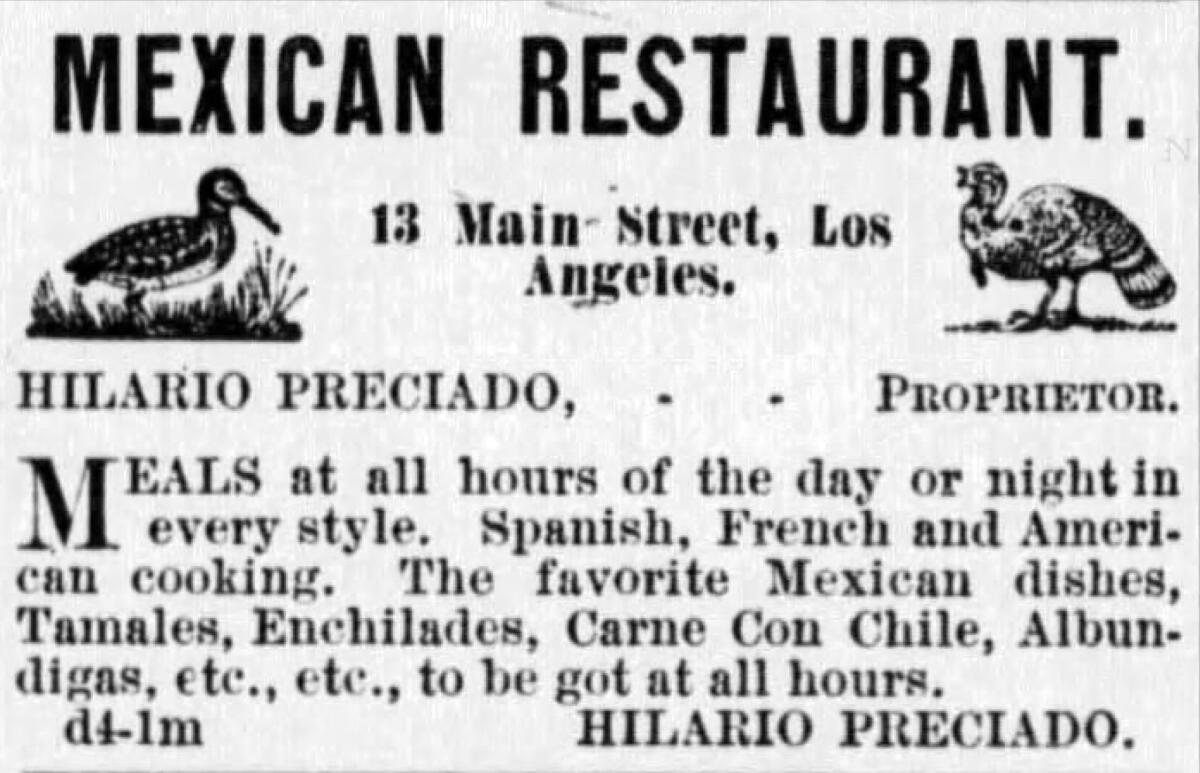
Mexican food is so important to us that the first issue of the then-Los Angeles Daily Times, published in December 1881, featured an ad by one Hilario Preciado for his restaurant: “favorite Mexican dishes, Tamales, Enchiladas, Carne con Chile, Albondigas, etc., etc., to be got at all hours.”
The ad ran for six months. Maybe Don Hilario can commission a full-pager from the hereafter to fund our good work? Or at least buy some digital subscriptions?
::
In the late 1800s and early 1900s, while other newspapers still used unimaginative fire-and-brimstone metaphors to describe Mexican food, The Times was busy accomplishing firsts.

It featured the earliest known English-language reference to a taco, in an 1899 letter from Mexico City by Los Angeles writer Olive Percival. Then-Times Publisher Harry Chandler helped to create what was arguably this country’s first hipster food hall: Olvera Street. We employed the original food influencer in Charles Fletcher Lummis, who thrilled readers with his weekly dispatches through the Southwest in 1885 (of tortillas he had in New Mexico, Lummis wrote, “They are good enough for a king”) and went on to publish a cookbook with Mexican recipes as a fundraiser to help restore California’s 21 Spanish missions.
The Times promoted America’s first celebrity chef of Mexican food: a Southern housewife named Bertha Haffner-Ginger. The paper brought her to the Southland in 1912 to run its cooking school, and her classes on Mexican food proved so popular that she left after a year to travel the country and lecture on the subject; her “California Mexican-Spanish Cook Book,” published in 1914, features the earliest known English-language recipe and photo for a taco.
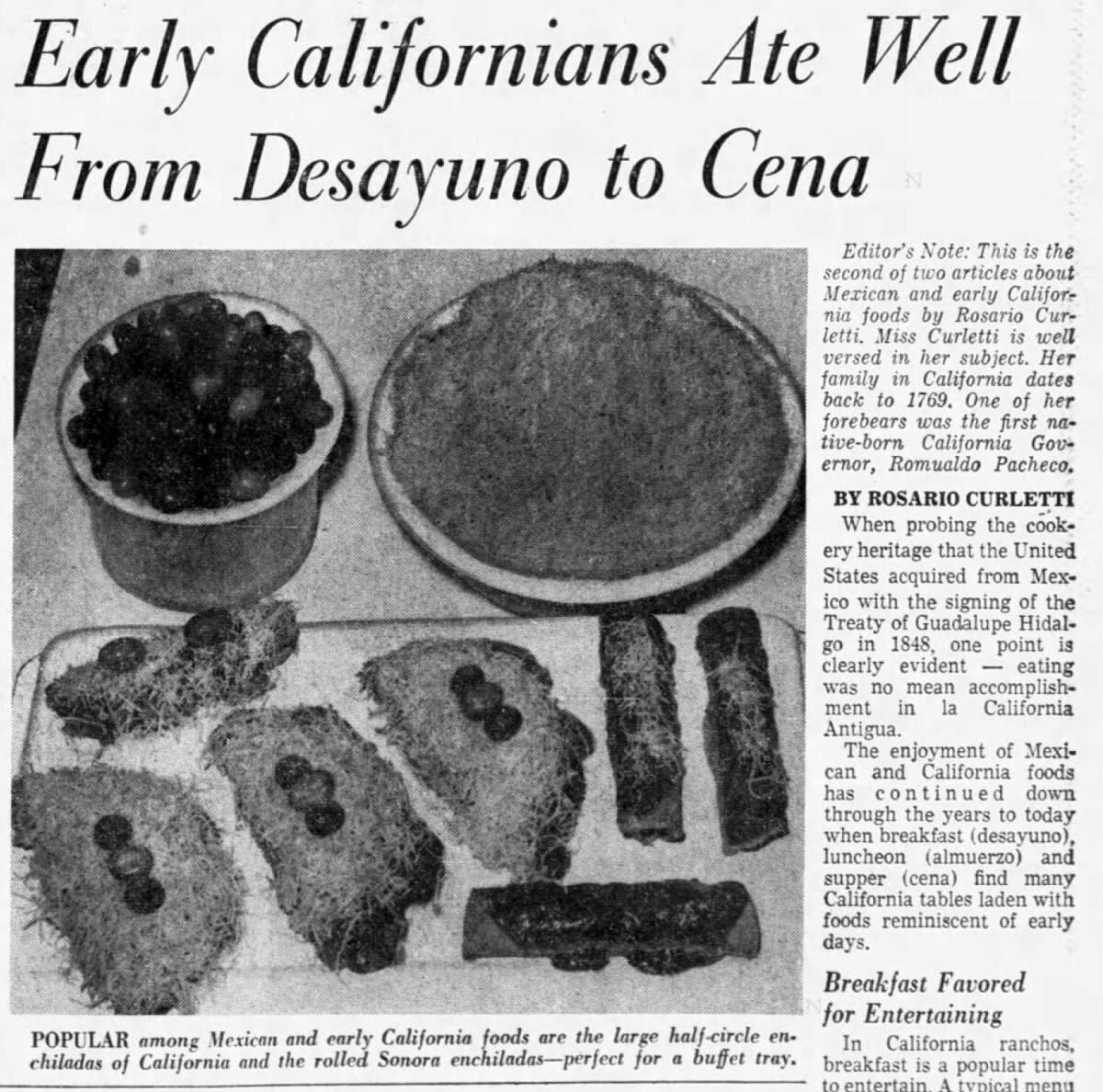
The Times taught Mexican cooking classes for decades, frequently plugged community pop-up dinners, and published hundreds of user-submitted recipes in its cookbooks. In 1958, The Times got its Santa Barbara society columnist Rosario Curletti, whose family had lived in California since 1769, to do a two-part series about the legacy of Mexican food in California. She laughed at how the Yankee invaders who conquered her ancestors “little dreamed that they had acquired a gastronomic treasure that has become part of the warp and woof of American cookery heritage.” The accompanying recipes she offered look pulled from an Alta California tasting menu of today: chilaquiles, nixtamal and atole.
In 2019, Los Angeles’ bowls runneth over with birria, the Mexican confederation of recipes involving meat rubbed, roasted or slowly stewed in an alloy of chilies, herbs and spices.
This paper played a big part in raising the national profile of Elena Zelayeta, a blind restaurateur from San Francisco who became America’s first Mexican celebrity chef. Not only did she teach several Times classes from the 1940s through the 1950s, but the paper plugged her books and visits to Southern California until her death in 1974, for which The Times wrote an appreciation — the only paper outside of the Bay Area to do so.
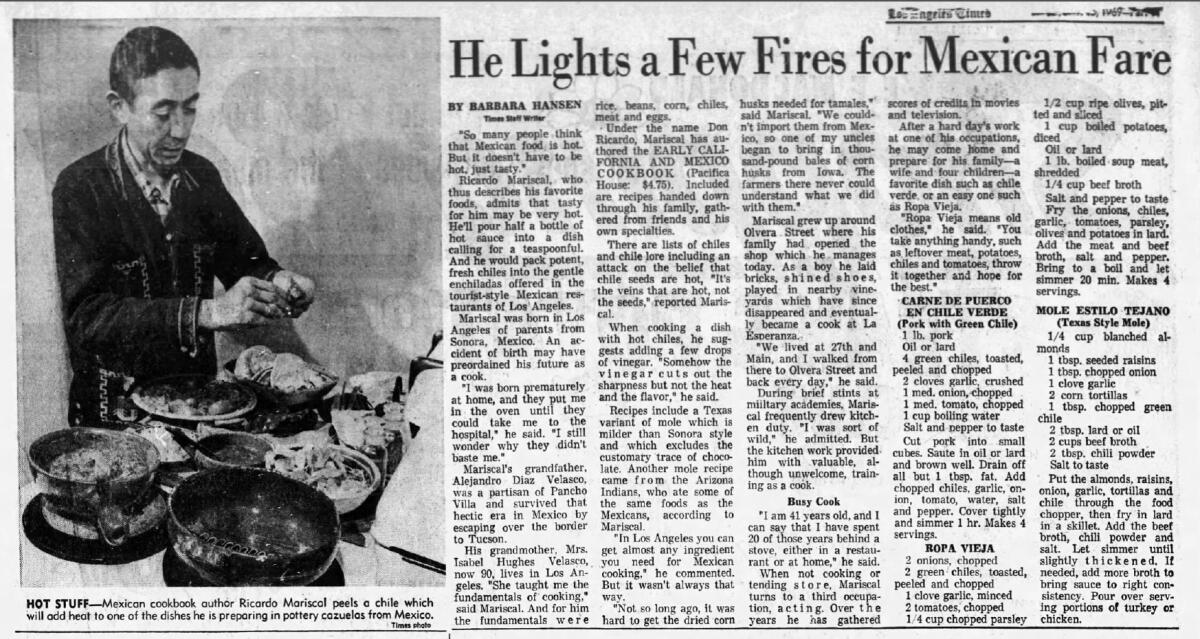
The author of that story was Barbara Hansen, a longtime Times staff writer and contributor who filed her first story in 1969 on an Olvera Street merchant who had just published a Mexican recipe book. In 1974, she pitched a weekly column focused on Mexican food to legendary Food section editor Betsy Balsley, who welcomed it.
“It seemed a natural fit for the Food section and it was,” Hansen said by phone recently from her home in Hancock Park. “It took off immediately with a huge response.”
“Border Line,” her column, debuted at a crossroads for Mexican cuisine in the United States. Until then, L.A. had largely lagged behind San Antonio, Dallas, San Francisco and even Chicago in setting Mexican food trends that the rest of the country would soon follow. But an influx of immigrants to Southern California was changing the food landscape. Hard-shell tacos fell out of favor, replaced by those made with soft corn tortillas. “New” dishes such as al pastor, mariscos and birria began to push out the combo plates of previous generations.
And Hansen was there to introduce the United States to almost all of it.
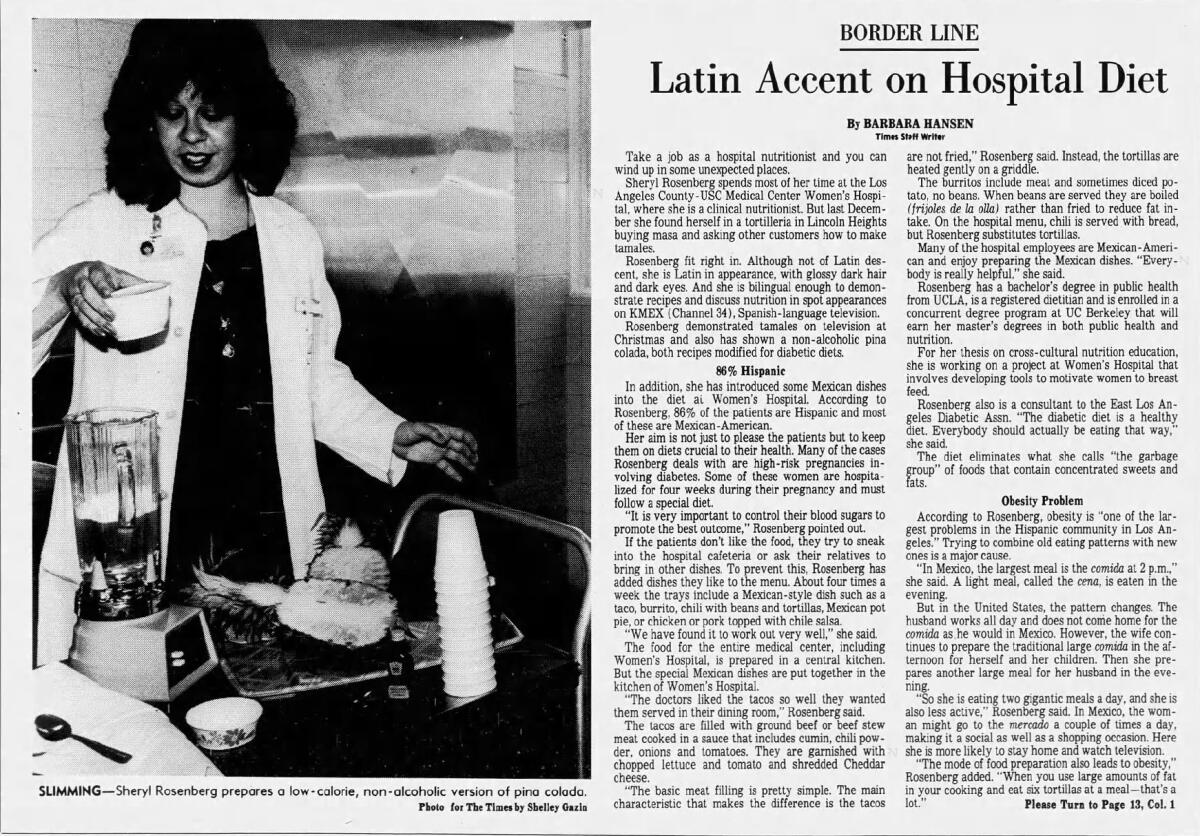
For over a decade, “Border Line” educated readers on Mexican food. Hansen offered recipes, profiled pioneers and rising chefs, and worked Southern California like a gumshoe detective. One memorable dispatch was a 1980 piece on a Jewish nutritionist at County-USC Medical Center who introduced Mexican food to the hospital’s regular menu after she found that many patients sneaked in their home cooking because the offerings were so bland.
“All ideas were welcome, and the response from the readers was enormous,” Hansen told me. “It showed people wanted to know about this cuisine. At one point, I even did a recipe in Spanish.”
After Hansen, Russ Parsons carried the Mexican-food torch as an editor and columnist from 1991 until his retirement in 2015. The New Mexico native put an emphasis on covering and assigning stories and essays involving Mexican products and ingredients, like pozole and chipotle peppers. He also continued The Times’ tradition of bringing in Mexican writers to pen stories and recipes.
“If you just look at demographics, this was part of Mexico,” he said recently. “I have always been a firm believer that food doesn’t matter without context. And it’s difficult to get context when you come from outside the culture. You don’t get the meaning. It has to be something that’s bred in the bone.”
Not mexicano but close enough was the late Jonathan Gold. He was the first mainstream critic to review a taco truck, in 1988, and he hailed the city’s burgeoning regional Mexican food scene in the days before social media. In recent years, Gold also highlighted young Mexican American chefs, including Ray Garcia of Broken Spanish and Carlos Salgado of Taco Maria, who fused their families’ cooking with refined techniques.
“No places match the breadth and depth of Mexican restaurants we have in Southern California, except Mexico City itself,” he wrote in 2013. “And maybe not even there.”
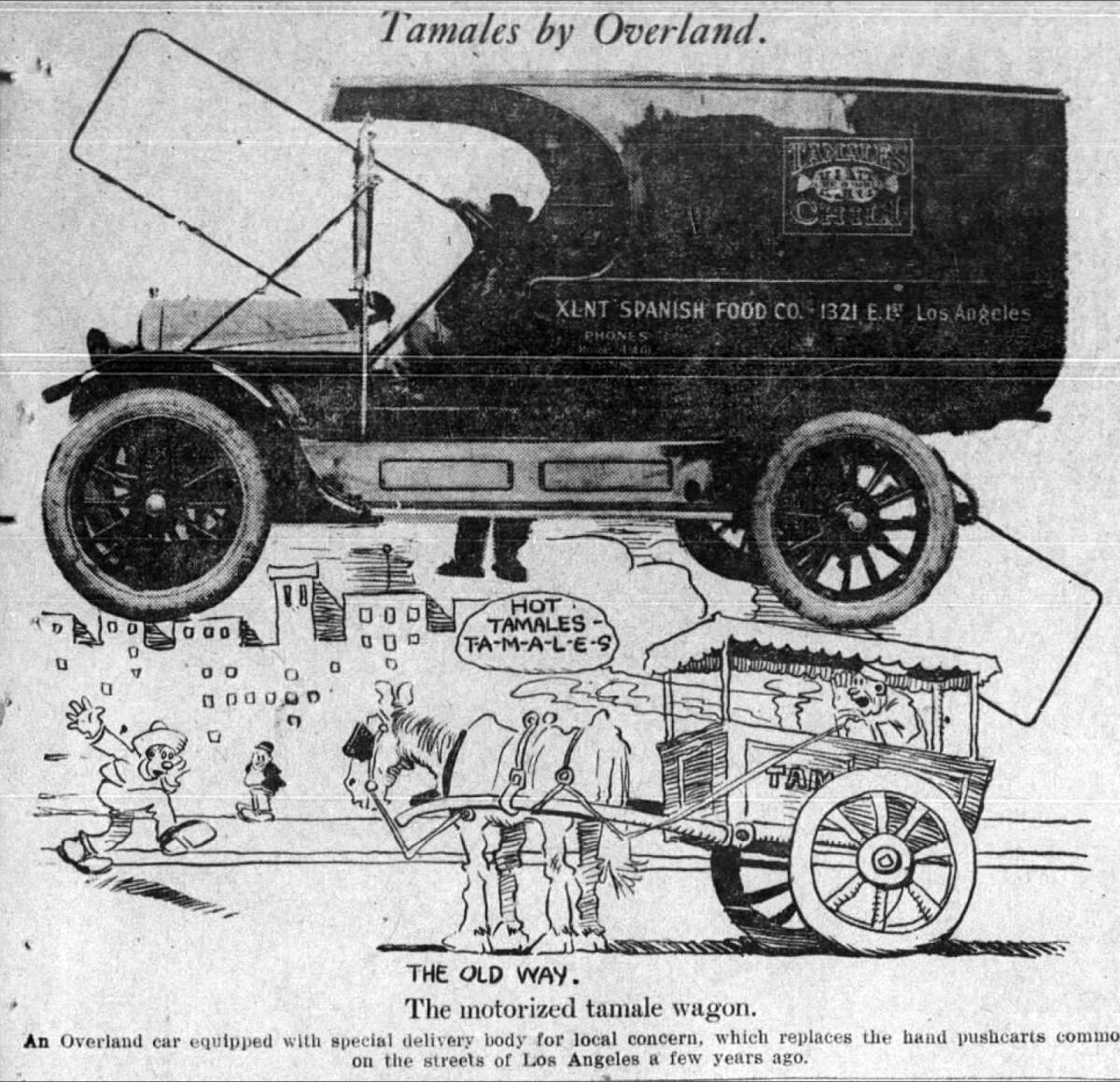
The Times’ coverage of Mexican food wasn’t always perfect. The paper campaigned against tamale wagons in the 1920s (“They belong not to the new order of things,” The Times editorialized in 1924. “They were born of the pueblo — they perish in the metropolis”) and taco trucks in the 1990s (a 1991 editorial urged the L.A. City Council to pass regulations targeting loncheras, arguing they were a public health issue). Writers interchanged “Mexican food” with “Spanish food” as late as the 1940s.
Too often, writers fell into the trap that Mexican food in Los Angeles was somehow inferior to the food in the motherland. In 1929, city columnist Lee Shippey moaned, “Why is it that in this, the third largest Mexican city in the world, there is no really notable and ‘convincing’ Mexican restaurant?”

But even at its worst, the paper’s food coverage of Mexicans was a refuge of positivity in a publication long notorious for its historical anti-Mexican slant. The Times infamously stoked the flames of the 1943 Zoot Suit Riots and printed slurs like “greasers,” “wetbacks” and “illegal aliens” for decades. As recently as 1994, The Times’ editorial board came out in favor of Proposition 187, the now-notorious anti-immigrant law.
The dichotomy between the paper’s news and food treatment of Mexicans “is not surprising,” says Natalia Molina. She’s a professor of American studies and ethnicity at USC who’s writing a book about Mexican restaurants in Echo Park during the 1950s and ’60s. Her previous work has highlighted The Times’ early white-supremacist leanings and clippings that referred to barrios as “pest holes.”
She points out that The Times mirrored the attitude of Southern Californians: Praise Mexican cuisine while demonizing the people behind it.
“We see the way this narrative plays out in Mexican restaurants again and again,” she says, “in everything from the decor, which might highlight a Spanish rather than an indigenous past, to the naming of items, such as ‘Spanish rice.’”
Jonathan Gold remembered in (mostly) his own words.
Molina still feels that the paper defines East L.A. as “anything east of Vermont.” But she is hopeful that The Times’ Food section can help right the paper’s historical wrongs.
And on that note, gentle cabrones — as the guy who wrote the book on Mexican food in the United States — I assure you that this section continues to take its mission seriously. We remain committed to bringing you the best in Mexican food, in the Southland and across the United States and Mexico. Besides, if we don’t do it, who’ll you trust for Mexican food coverage? The New York Times? They put peas in guacamole!
This collection of our delicious Mexican recipes — from tacos, tamales and enchiladas to pozole and aguachile — showcase the history of our Mexican food coverage.
More to Read
Eat your way across L.A.
Get our weekly Tasting Notes newsletter for reviews, news and more.
You may occasionally receive promotional content from the Los Angeles Times.
